Water Is Not a “Resource.” It Is the Source!
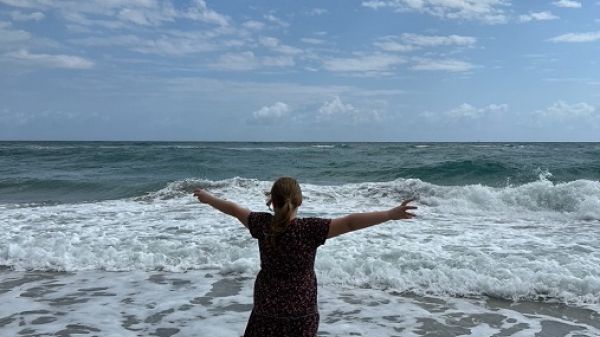
Summary
On World Water Day, March 22, 2023, approximately 10,000 participants gathered at the United Nations (UN) Headquarters in New York for the first UN World Water Conference in 50 years. As environmental educators, many of us have a more inclusive and holistic view of the web of life, but specific to water, many teach it with one curricular focus, usually science and/or environmental studies. It has been my privilege to develop curriculum and learning materials for teaching about water since 2002, which have taken a broader cross-disciplinary approach. Given that most of my work has been in and around the UN, it is also very inclusive and global in nature. Given the broad scope of the sustainable development goals and rapidly changing climate, combined with water conference outcomes encouraging each and all of us to leave silo-based approaches behind and help to create a better world for current and future generations. The title of this blog is from a statement by the UN Major Group on Indigenous Peoples (MGIP). The quote serves as the foundation for this blog, which aims to offer some ideas for cross-sectoral programming related to water and the inclusion of the education sector in this plan for action.
Introduction
“In one drop of water are found all of the secrets of all of the oceans.”
—Kahlil Gilbran
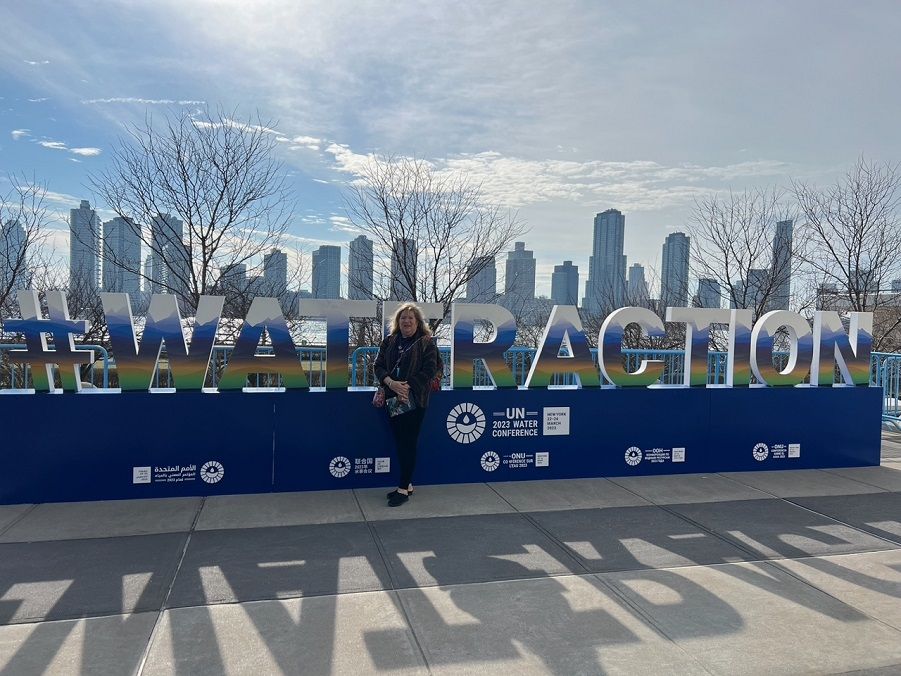
Photo courtesy of Donna Goodman
On World Water Day, March 22, 2023, I was honored to be one of around 10,000 participants at the United Nations Headquarters in New York for the first UN World Water Conference in 50 years. The Conference brought together world leaders, civil society, business leaders, young people, scientists, academics, the UN System, and others from across many sectors around a common goal: to get the world on track to meet Sustainable Development Goal 6 (water and sanitation for all by 2030) and, by doing so, accelerate progress across all SDGs.
One of the key outcomes, the Water Action Decade, has been designated by the UN General Assembly to be observed from 2018 to 2028. The Action Plan was created to complement the process of the 2030 Agenda for Sustainable Development, moving away from silo-based approaches toward integration of water action across sectors at the global level.
UN Secretary-General Guterres noted that “the Conference represents a watershed moment, and global leaders cannot afford to delay action to safeguard water resources. "We have a responsibility to future generations, and to the millions of people today who continue to face water insecurity."
The Role of Environmental Educators
As environmental educators, I perceive our role as the front-line team toward the empowerment of these generations to not only survive but thrive as they mature into a world of water and resource security. Most of my career has focused on water education and empowerment of children and adolescents around the world and my perspective has been formed through the lens of these kids who are taking action everywhere. As many parents and teachers already know, kids, wherever they may be in the world, see things in a more holistic way. Whether it is flooding water blocking their way to school, contaminated water from lack of sanitation, or agricultural chemicals in the nearby river. Or maybe it is the sheer joy and immensity of water as far as you can see around you!

Photo courtesy of Donna Goodman
Many of us have a more inclusive and holistic view of the web of life, but specific to water, many teach it with one curricular focus, usually science and/or environmental studies. It has been my privilege to develop teaching and learning materials about water, starting with my first book, Every Body Counts, Every Drop Matters United Nations Classroom Resource Guide on Water published in 2002, which has taken a broader cross-disciplinary approach. Given that most of my work has been in and around the UN, it is also very inclusive and global in nature. The broad scope of the sustainable development goals and rapidly changing climate, combined with the 2023 Water Conference outcomes encourages each and all of us to leave sector-based approaches behind and help to create a better world for current and future generations.
In this blog, I offer some ideas for cross-sector local yet global advocacy and programming related to water that focus on a sustainable future for all, while making the case for the role of education. In more than 30 years as an international program advisor working in close collaboration with fellow policymakers, educators, and child advocates, I have continually been disappointed with the slim to null allocation of resources for action that goes to the Education sector. For example, billions, often hundreds of millions of dollars are allocated to countries, states, and counties for climate change adaptation and mitigation plans, yet almost none of these funds go to schools, families, or local actions of kids. Why? It’s largely because education leaders are not at the table when these allocations and budgets are being negotiated. It is also important to note that almost a third of the global population and nearly fifty percent of the citizenry in many developing countries are below the age of eighteen.
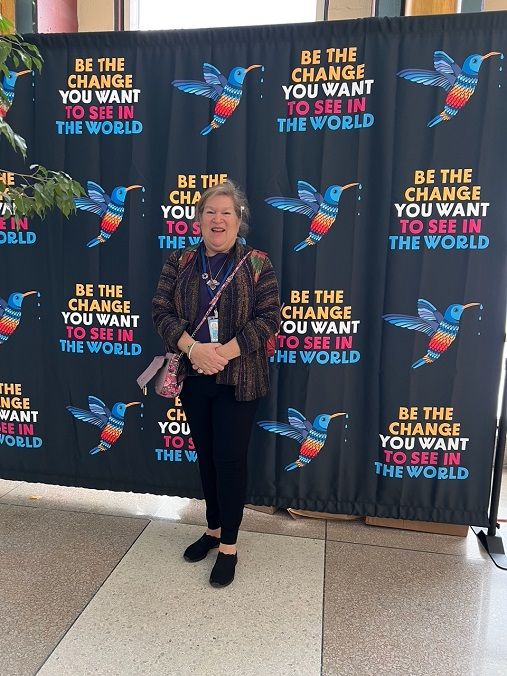
Photo courtesy of Donna Goodman
If we, as environmental educators can embrace the cross-sectoral nature of the environment, beginning with water and flowing to every other sector whether it be health, finance, construction, climate change, governance, disaster risk reduction, or anything else, and influence those in the leadership, from principals and superintendents to Ministers of Education and private sector leaders, not only will our budget lines reflect the relevance of our work, but also our students and children will be informed and empowered to be the change that these plans for action are so keenly seeking.
We can look at some intersectoral approaches to teaching about water, beginning with the basics. As we journey from the science of a water molecule to the hidden treasures of water, we hope teaching about the water cycle will inspire and engage us to discover the value of every drop. As the water cycle on Earth is a closed system (as far as we understand today) and there is no new water, we can imagine that the water we are drinking today was once a wading pond for dinosaurs!
As a 13-year-old student in Poland said, “Water rules everything and submits itself to everything. It lets us live, but it can also kill. It is joined with life in an unbreakable bond. Therefore, if there were no water, there would not be any life on Earth, including human beings.”
Cross-Sectoral Programming for Water
Often to bring things into perspective, we can use a gallon jug to represent all of the water on Earth. When we consider how much of that is drinkable, it is less than a teaspoon in comparison. Further, when we point out that the Earth is a blue planet comprised of 70 % water and the bodies of most young people are also 70% water (that percentage often lowers as we age), we also teach to respect and love the water in our own bodies, as well as our neighbors. Teaching about the water cycle helps students gain experiential tools that can help us to learn and grow as stewards of the planet.
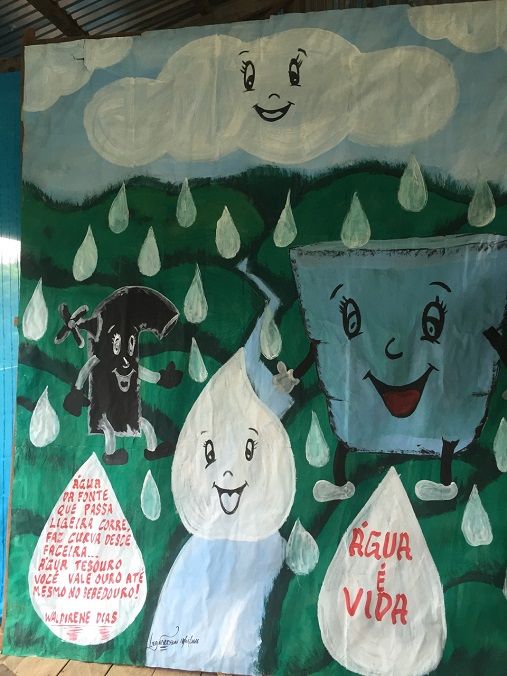
Photo courtesy of Donna Goodman
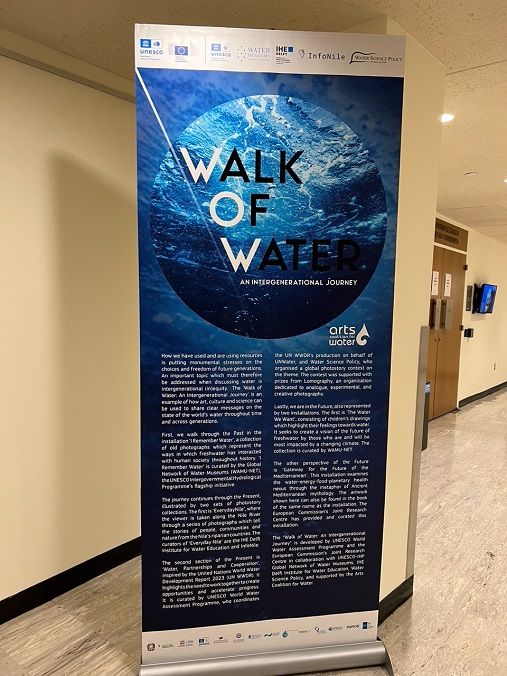
Photo courtesy of Donna Goodman
Next, the journey ripples into more practical uses that impact our daily lives at home, at school, and in the larger community. We dive into traditional practices, social norms, and daily uses. We can explore groundwater: how did it get there and how does it get out? We also ask how water for drinking and washing gets into your home. And where does the water go when it leaves your home or school when you, for instance, flush the toilet (if you are so lucky) or after it has been used for washing your car?
In social studies, we can examine how water is governed. The Colorado River which makes its way through communities, states, and international borders is a compelling story that considers who gets to use the water and where it goes. And what about gender equity and water? Often in the developing world, women and girls are the stewards of water sometimes walking several miles to and from an available water source. Even in the industrialized world, municipal and regional water contamination is known to disproportionately impact children. Teaching about the water cycle in social studies can also include food security and how droughts, flooding, and severe weather impact the food supply.
Beyond books, I have and continue to develop interactive online and edutainment resources to spark imagination and encourage decision-making. My first UNICEF project was the “Water Alert” game developed and tested with kids worldwide. My ECOMASTERS series of global adventures highlight the magic of water as well as its practical uses and solutions. We can have a lot of fun with students learning about the different impacts of their day-to-day activities on our waterways. There are too many to mention in a blog post.
Conclusion
In closing, I want to emphasize that each of us can teach about water. Our entire world is counting on us. As educators, we have the opportunity to empower and inspire generations. The participation of educators in this global conversation is essential.
I look forward to any and all feedback and case studies. Please share in the comments below.
About the Writer
Donna Goodman has been a champion of the rights and participation of child and young people in the environment sector for more than 25 years. Her international development work has been widely published by UN partners including UNICEF, United Nations Environment Programme (UNEP), World Health Organization (WHO) and others. She is also a moderator for the eePRO Group K–12 EE.

